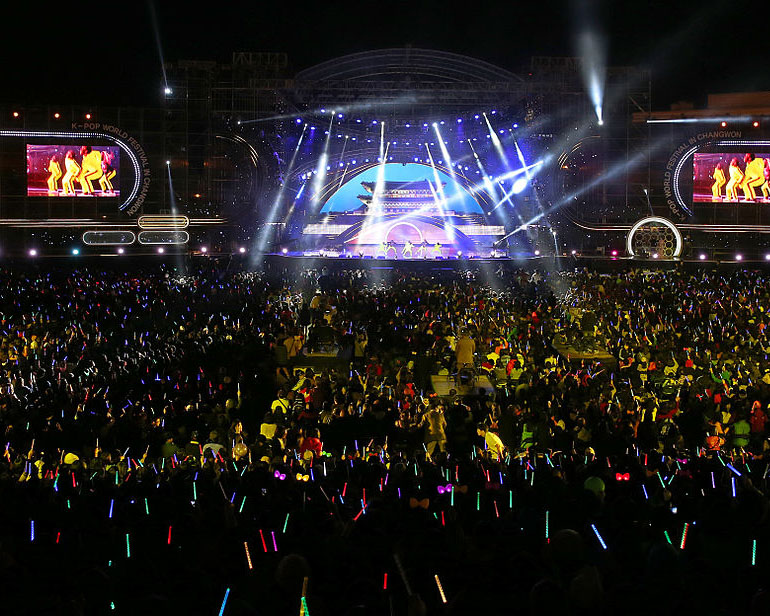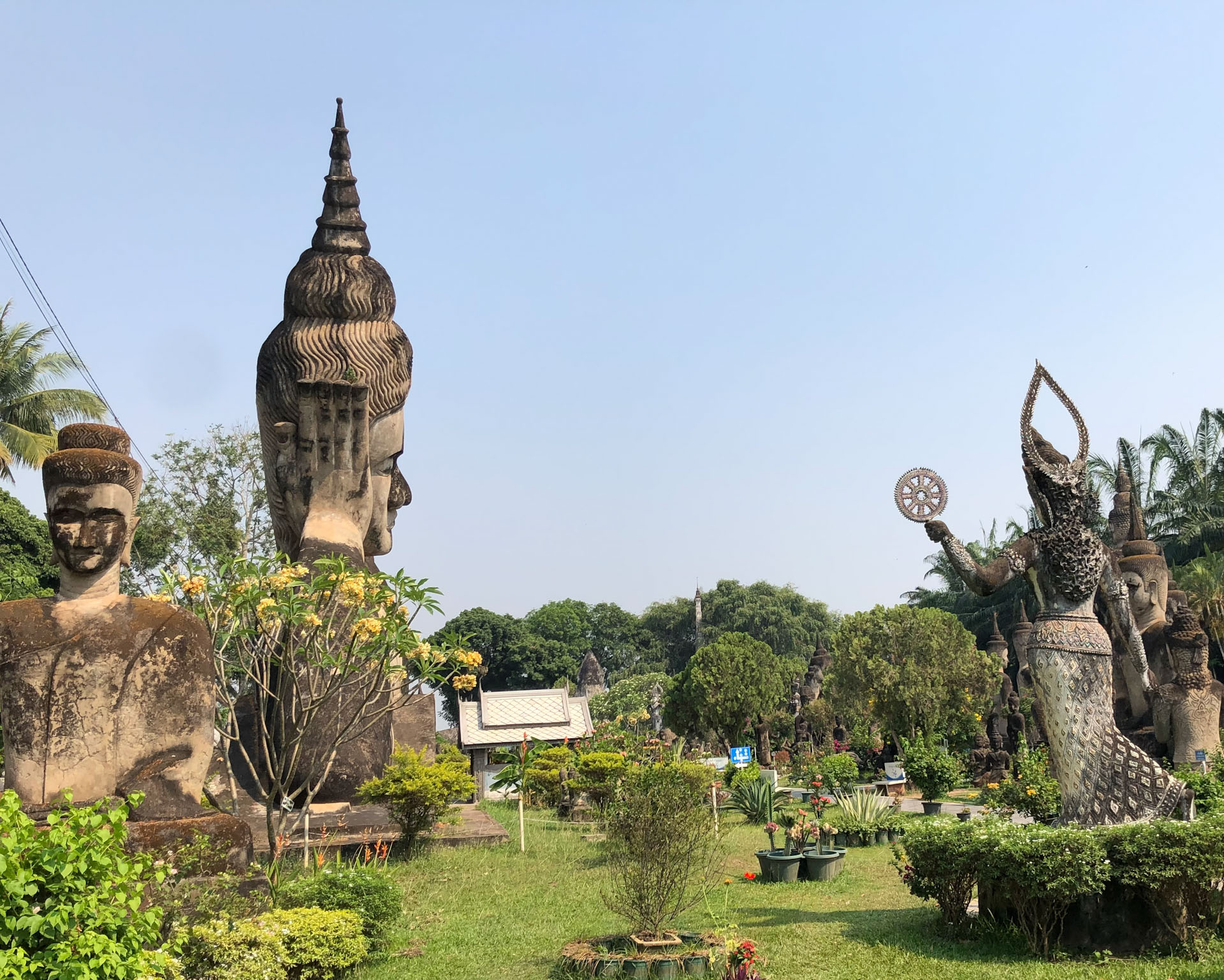South Korea is a country that has a rich and diverse musical heritage, spanning from ancient times to the present day. South Korea ‘s music can be broadly categorized into three main genres: traditional music, popular music, and non-popular music. In this blog post, we will explore some of the features and examples of each genre and how they reflect the culture and history of South Korea.
Traditional Music
Traditional music (gugak) is the music that has been passed down from generation to generation in South Korea. It includes various styles and forms, such as court music, folk music, religious music, and ritual music. Traditional music is characterized by its use of indigenous instruments, such as stringed instruments (gayageum, geomungo, haegeum), wind instruments (daegeum, piri, saenghwang), percussion instruments (janggu, buk, kkwaenggwari), and vocal techniques (pansori, minyo, sijo).
Some of the most representative examples of traditional music are:
- Court music (jeongak): The music that was performed for the royal family and the aristocracy during the Joseon dynasty (1392-1910). It was influenced by Chinese and Mongolian music and had a refined and elegant style. It consisted of instrumental ensembles (hyangak), vocal ensembles (dangak), and mixed ensembles (akdang).
- Folk music (minsokak): The music that was performed by the common people for entertainment and expression. It was influenced by various regional and ethnic cultures and had a lively and diverse style. It consisted of narrative songs (pansori), lyrical songs (minyo), dance songs (nongak), and instrumental solos (sanjo).
- Religious music: The music that was performed for worship and meditation in various religious traditions, such as Buddhism, Confucianism, Shamanism, and Christianity. It was influenced by Indian, Chinese, Korean, and Western music and had a solemn and spiritual style. It consisted of chants (beompae), hymns (sogak), prayers (gasa), and instrumental accompaniments.
Popular Music
Popular music (k-pop) is the music that has gained widespread popularity among the masses in South Korea since the 20th century. It includes various styles and genres, such as trot, rock, ballad, dance, hip hop, R&B, soul, jazz, folk rock, indie rock, electronic, and fusion. Popular music is characterized by its use of modern instruments, such as guitars, keyboards, drums, synthesizers, samplers, and computers; its incorporation of foreign influences; its production of catchy melodies; its creation of idol groups; and its promotion of visual aesthetics.
Some of the most representative examples of popular music are:
- Trot (teuroteu): The oldest form of popular music in South Korea that originated from Japanese enka and American foxtrot in the early 20th century. It is characterized by its simple rhythm; its repetitive melody; its sentimental lyrics; and its distinctive vocal style that uses vibrato and nasal tones.
- Rock (rok): The form of popular music that emerged in South Korea in the 1960s under the influence of American and British rock bands. It is characterized by its use of electric guitars; its emphasis on rhythm; its expression of rebellion; and its diversity of subgenres such as psychedelic rock, hard rock, punk rock, metal rock, alternative rock, etc.
- Ballad (balladeu): The form of popular music that became dominant in South Korea in the 1980s under the influence of Western pop singers. It is characterized by its use of acoustic instruments; its focus on melody; its delivery of emotions; and its themes of love and romance.
- Dance (daenseu): The form of popular music that rose to prominence in South Korea in the 1990s under the influence of American disco and European techno. It is characterized by its use of electronic sounds; its fast tempo; its catchy hooks; and its choreography.
- Hip hop (hiphap): The form of popular music that originated from African American culture in the United States in the late 1970s and spread to South Korea in the late 1980s. It is characterized by its use of rap; its incorporation of sampling; its expression of social issues; and its culture of graffiti, breakdancing, and DJing.
- R&B (ar&bi): The form of popular music that originated from African American soul and gospel music in the United States in the 1940s and evolved to South Korea in the 1990s. It is characterized by its use of smooth vocals; its incorporation of funk and jazz; its delivery of sensuality; and its themes of love and sex.
- Soul (soul): The form of popular music that originated from African American gospel music in the United States in the 1950s and developed to South Korea in the 2000s. It is characterized by its use of powerful vocals; its incorporation of blues and rock; its expression of spirituality; and its themes of faith and hope.
- Jazz (jaejeu): The form of popular music that originated from African American ragtime and blues music in the United States in the late 19th century and diversified to South Korea in the 2000s. It is characterized by its use of improvisation; its incorporation of swing and bebop; its exploration of harmony; and its genres of traditional jazz, modern jazz, fusion jazz, etc.
- Folk rock (folk rok): The form of popular music that originated from American folk music and British rock music in the 1960s and flourished in South Korea in the 2010s. It is characterized by its use of acoustic guitars; its emphasis on lyrics; its expression of social awareness; and its genres of folk, indie, acoustic, etc.
- Indie rock (indi rok): The form of popular music that originated from American alternative rock music in the 1980s and grew in South Korea in the 2010s. It is characterized by its use of independent labels; its experimentation with sounds; its expression of individuality; and its genres of garage rock, lo-fi, post-rock, etc.
- Electronic (elektronikeu): The form of popular music that originated from European electronic music in the 1970s and expanded in South Korea in the 2010s. It is characterized by its use of synthesizers; its manipulation of sounds; its creation of atmosphere; and its genres of ambient, house, techno, trance, etc.
- Fusion (hyeopseong): The form of popular music that combines elements from different genres, such as traditional music, popular music, Western music, or non-Korean music. It is characterized by its use of creativity; its integration of diversity; its innovation of style; and its examples of gugak fusion, k-pop fusion, world fusion, etc.
Non-Popular Music
Non-popular music (bipungak) is the music that has not gained widespread popularity among the masses in South Korea but has been appreciated by a niche audience or a specific community. It includes various styles and genres, such as classical music, contemporary music, experimental music, religious music, ethnic music, and regional music. Non-popular music is characterized by its use of formal instruments, such as violins, pianos, cellos, flutes, clarinets, etc.; its adherence to rules or conventions; its pursuit of artistry or originality; and its expression of values or identities.
Some of the most representative examples of non-popular music are:
- Classical music (gugak): The music that originated from Western Europe from the 11th century to the present day. It is characterized by its use of notation; its division into periods such as medieval, renaissance, baroque, classical, romantic, modern, etc.; and its forms such as symphony, concerto, sonata, opera, etc.
- Contemporary music (hyeondae eumak): The music that emerged from Western Europe and North America in the 20th century. It is characterized by its use of innovation; its experimentation with techniques such as atonality, serialism, aleatoric music, electronic music, etc.; and its composers such as Arnold Schoenberg, Igor Stravinsky, John Cage, Karlheinz Stockhausen, etc.
- Experimental music (silheom eumak): The music that challenges the boundaries or conventions of existing genres or forms. It is characterized by its use of exploration; its experimentation with concepts such as noise, silence, chance, etc.; and its artists such as Nam June Paik, Lee Ufan, Kim Ku-lim, etc.
- Religious music (jonggyo eumak): The music that is performed for worship or meditation in various religious traditions, such as Buddhism, Confucianism, Shamanism, Christianity, etc. It is characterized by its use of sacred texts; its adherence to doctrines or rituals; its expression of devotion or enlightenment; and its examples such as beompae, sogak, gasa, hymns, etc.
- Ethnic music (minjok eumak): The music that represents the
- culture or identity of a specific ethnic group in South Korea, such as the Jeju, the Korean Chinese, the North Korean defectors, etc. It is characterized by its use of native instruments, such as the ocarina, the erhu, the accordion, etc.; its incorporation of folk songs, dances, or stories; its expression of heritage or diversity; and its examples such as Jeju folk songs, Korean Chinese pop songs, North Korean trot songs, etc.
- Regional music (jiyeok eumak): The music that reflects the characteristics or features of a specific region in South Korea, such as Seoul, Busan, Jeolla, Gyeongsang, etc. It is characterized by its use of local dialects, accents, or slang; its incorporation of regional themes, events, or personalities; its expression of pride or rivalry; and its examples such as Seoul rock songs, Busan trot songs, Jeolla pansori songs, Gyeongsang satoori rap songs, etc.
The music of South Korea is a diverse and dynamic field that showcases the culture and history of the country. It encompasses various genres that range from traditional music to popular music to non-popular music. It also reflects the influences and interactions of foreign and domestic sources. The music of South Korea is a valuable and enjoyable way to learn more about this fascinating country.

Experience the Magic of Patagonia

How Machu Picchu changed the World

Uruguay, a Destination for Digital Nomads









